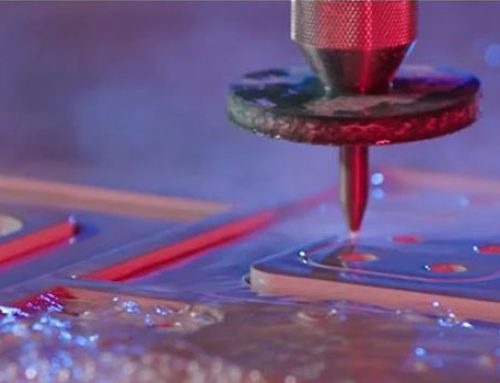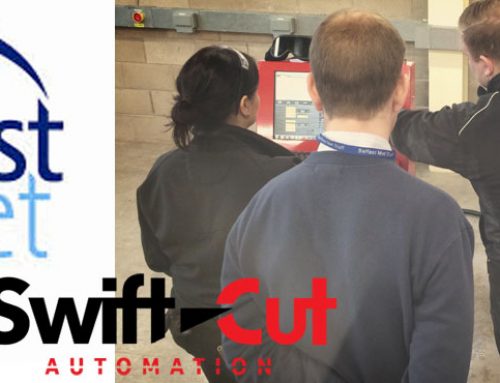Here’s a common question:
How long should I expect the consumables to last on my Hypertherm air plasma system?
Unfortunately, the answer isn’t all that simple, especially if cutting by hand. What follows however, is a good effort from Hypertherm’s Jim Colt.
No.1-Putting hard numbers (starts, feet cut, hours) is hard with plasma cutting. The operator, the type and thickness of material, and the cutting machine / height control, or techniques used by the hand held torch operator all play a big role.
No.2-Assuming that a hand torch operator understands good piercing and edge starting techniques to keep molten metal from blowing back on the torch nozzle (sometimes called the tip if it is not a Hypertherm system!) then consumable life can be extremely good.
No.3-The biggest problem with most plasma torches is when you are hand cutting with an exposed (unshielded) nozzle. Ideally, you need to hold a standoff with an unshielded setup at all amperages over about 30 Amps. If the nozzle touches the plate during a cut it creates a current path between the negative electrode, the “floating nozzle”, and the positive plate. This causes a double arc between the electrode / nozzle, and the nozzle / plate which damages the nozzle orifice. When the orifice gets a little damaged, poor angularity is the first thing noticed, followed by more double arcs and more damage.
This causes slower cut speeds and heavy dross, then the nozzle gets changed. With an exposed nozzle, often heavy handheld users use a standoff device (wheels, or a wire standoff, or a ceramic cup) however the molten metal blowback during piercing can still create that current path from the nozzle to the plate and double arcing is still a problem. If you have used a hand held torch with non shielded consumables at over 30 Amps and did some drag cutting, you likely feel the torch “sticking” to the plate. This is a result of double arcing.
Hypertherm invented and patented the shielded torch technology in the 80’s, and has improved it over time. The shield’s primary function is to electrically isolate (or insulate) the nozzle from the plate, totally eliminating double arcing. Hypertherm shielded torches drag cut at up to 200 Amps with no friction or double arcing. This is great for easing the fatigue caused by holding a standoff and for dramatic improvement in consumable life and cut quality.
Each new iteration of the shield from Hypertherm seems to improve the capability (for both hand and machine cutting). The latest Duramax torch (standard with the Powermax65, Powermax85, Powermax105, and available as a retrofit torch for most older Hypertherm air plasmas) uses the shield not only for isolation of the nozzle but also uses a patented technology called conical flow that uses the combined internal shape of the nozzle and the shield to force the shield cooling air to super cool the nozzle orifice as well as injects this air flow around the perimeter of the arc to increase its energy density, The result is no sticking, no double arcing, faster cut speeds, thicker piercing capability, as well as dramatically longer nozzle life. The bottom line: if you can drag cut you can easily use a metallic straight edge or template. The hand cutting job is easier.
While it is hard to gauge consumable life (as I already mentioned,) for hand cutting with the latest shielded torch technology, I normally expect hundreds of feet of cut, and 600 to 1,200 pierces or put another way, I expect 2 to 4 days of cutting (actual arc-on time) in many cases.
Jim Colt. Applications Technology Manager Hypertherm






